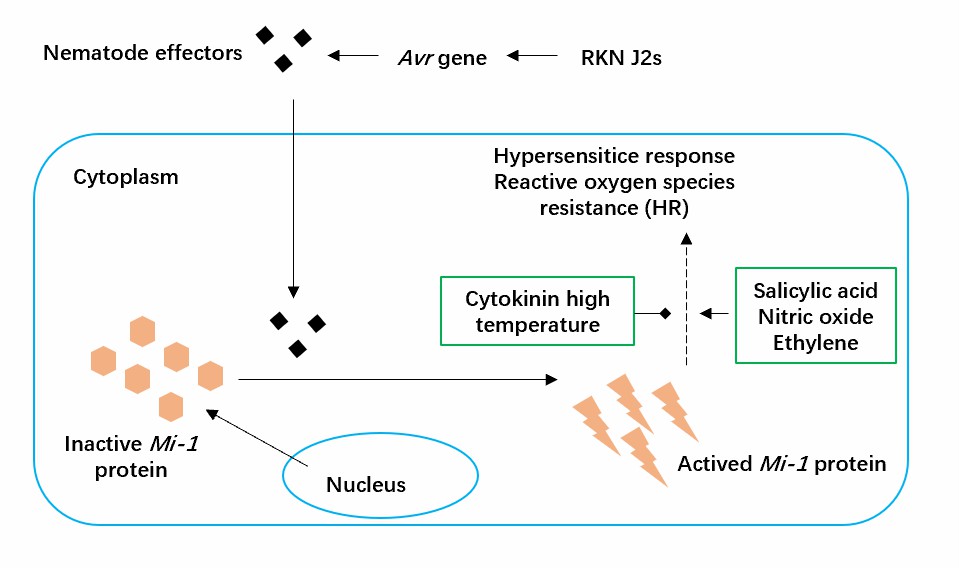Plant nematodes are an essential group of pathogenic organisms that cause serious damage to agricultural production and significant losses to crop yields worldwide. Plant-resistant genes play an important role in the response of plants, and the discovery of nematode-resistant genes and the development of nematode-resistant varieties is an effective way to control nematode diseases. The localization and cloning of nematode-resistant genes have significantly contributed to elucidating the molecular mechanism of nematode resistance in plants.
Lifeasible makes full use of our specialized libraries, selection strategies, and maturation techniques to optimize the stability and performance of plant science. With advanced technology and experienced staff, we provide analysis services for plant resistance genes to nematode infection to global clients.
 Fig.1 Hypersensitive response of Mi-1 after nematode infection in tomatoes.
Fig.1 Hypersensitive response of Mi-1 after nematode infection in tomatoes.
Lifeasible offers a reliable analysis of plant resistance genes to nematode infection to meet your research demands. With years of experience in plant science, our advanced platforms can help our clients solve various difficulties and conduct research. If you are interested in our services or have any questions, please feel free to contact us or make an online inquiry.
Lifeasible has established a one-stop service platform for plants. In addition to obtaining customized solutions for plant genetic engineering, customers can also conduct follow-up analysis and research on plants through our analysis platform. The analytical services we provide include but are not limited to the following:
STU-CRISPR System Improves Plant Genome Editing Efficiency
April 19, 2024
Application of Exosomes in Facial Beauty
April 12, 2024